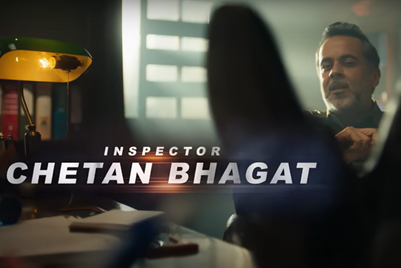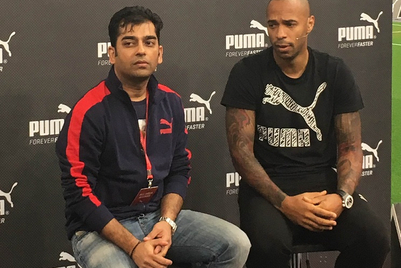It is time for savvy marketers to look beyond Millennials. That’s old hat.The smart ones are today targeting, in fact actively seeking out and reaching out to, anyone who is a HENRY.
Who is HENRY? Well HENRY is an acronym for High Earning Not Rich Yet customers! Such customers are easy to identify … all those late 20s-early 30s IIM A-B-C graduates who leave campus with salary packages of Rs. 24-30L (plus variable!) and somehow manage to double/triple their CTC in 5 years or less at multinat banks, PE firms and fintech companies. Or those bright IITians who work in all those American tech and data companies making salary packages denominated in dollars but paid locally in rupees. Or those night-owl legal types from the National Law Schools who work-hard-earn-hard at these pay-in-dollars-by-the-hour law firms, easily taking home Rs. 3-4 lacs a month at age less than 30. One could say such specimens are few and far between, but any bright marketer will tell you that these ‘cerebral’ types are the ones who propel the luxe economy in Bangalore or Gurugram or Pune. Well these are the HENRYs … there, yet not fully there. Well-to-do, in fact ‘prosperous’, maybe ‘affluent’ too by some definitions, but still some distance short of ‘rich’.
The term HENRY is not a new one. It is marketing jargon, first used by Fortune magazine way back in 2003, to categorize high earners on the cusp of getting rich, running households with annual incomes between US$100,000 and US$250,000 in the US. HENRYs transcend generational confines. But increasingly, yes today overlap with upwardly mobile millennials. Somehow, HENRY as a target audience definer has not caught the fancy of either marketers or researchers in India. One could say that the size of this audience is too miniscule in India yet but then these are the gilt-edge customers who are the innovators and early adopters today for most new products, and new technologies, even paying the early premium for novelty and differentiation to be the first to flaunt badge symbols. More importantly, these HENRYs are the High Net Worth Individuals (HNWI) of tomorrow that all wealth managers covet and venerate.
|
What's your favourite marketing ACRONYM?
-
Send us your response on [email protected]
-
The best responses will win gifts and your response shall be published on our platforms with due credits
|
It is not that HENRYs are a new phenomenon. Each generation has had its HENRYs. It is just the current era that we live in has had a veritable explosion of wealth, that too much more democratically distributed amongst numbers more numerous than ever before. In previous generations HENRYs aspired for a bigger house, or a higher horse-power car, or an Ivy League education for their kids. Today’s generation of the millennial HENRYs go after experiences: an Alaska cruise, a Heartfulness meditation, or a meal at Eleven Madison Park. Another interesting perspective to this discussion is that Gen-Xers thought it was societally unacceptable to move back home, but in the West today it’s not looked down upon among millennial HENRYs, many of whom have saved up and accumulated wealth by moving back home.
The HENRY of today is the one who buys that Royal Enfield (or better still the Harley Davidson) for the weekend; and one day in the near future will be the buyer of the Mercedes. HENRY today is in the market for the trip to Mount Everest base camp; tomorrow he will want to be on The Flåm Railway trip in Norway. HENRY today has all the subscriptions … from Netflix HD, Amazon Prime, Hotstar VIP, Quint Bloomberg, ET Prime … even New Yorker and WSJ. HENRYs till a few years earlier were HUFFIES (Heavy Users of Fast Food) but they have now moved beyond Swiggy, Zomato and Uber Eats to Zomato Gold and CultFit. So, HENRY is a WIP … a work-in-progress towards higher destinations, bigger acquisitions and greater experiences.
If HENRY is a clever little sociological neologism made up of the initials of other words, the best-in-class marketing acronym today, by far, is SINBAD … Single Income, No Boyfriend, Absolutely Desperate! This sure is a fun name really for a specific target audience … I am tickled pink more so since this acronym is long, it's timely, and, best of all, it spells out a guy's name for a women’s group! Somewhere deep in the lonely confines of a demographic-marketing think-tank, a crossword puzzle-setter must certainly be beaming a little self- congratulatory smile for an acronym so different, yet buzzy! Well, the archetypical SINBAD is the affluent, highly educated, smart, savvy, well-turned-out young lady next door (most likely from the same IIM-IIT clan mentioned above, but quite likely Harvard or Wharton too) representing a socio-economic group no marketers in India have taken real note of. In the Western world these are the ladies that drive the sales of the likes of Manolo Blahnik, Jimmy Choo and Chanel before becoming Versace, Prada, Gucci and Loius Vuitton loyalists later in life. And yes, ‘desperate’ in the ‘D’ of SINBAD is desperate for just the best of everything before everyone else, lest you jump to any other conclusions!
The closest male equivalent of SINBAD, by the way, is SISPIT (Single & Spending It)! The common belief is that YUPPIE (Young Urban Professional Person In Employment) is the first born amongst social acronyms that marketers adopted. From Yuppie came Buppie and Guppie (Black and Gay Urban Professional People In Employment, respectively). It didn't take long for marketers to realise this would work with anyone or anything. Coming up with a local version - Chuppie, Wuppie, Luppie, Huppie, Nuppie, Sluppie, and what have you. Smart marketers soon coined DINK (Double Income, No Kids), a pretty piece of shorthand to describe a specific sort of yuppie household. This evolved to describe a sub-stage in the family evolution, DINKY (Double Income, No Kids Yet). After Dinks there came DIMPS (Dual Income, Money Problems), OINKS (One Income, No Kids), LIPS (Low Income, Parents Supporting), TIMATS (Treble Income Menage A Trois), SINCS (Single Income, Nine Cats) and many other permutations. Marketers have seriously used some of these classifications over time to target products and brands, and some of course like Timat were always just interpretations of sociological aberrations in society.
Marketing thinkers in the West are awesome in the way they manage to slice and dice the market. One would have thought that DINK and DINKY were creative enough as classifications. But DINKY (Dual Income No Kids Yet) was obviously not good enough for smart marketers who have gone on to create even more interesting classifications DINKER (Dual Income No Kids Early Retirement), DINKWAD (Double Income No Kids With A Dog) even DINKYANDE (Dual Income No Kids Yet And No Dog Either). In the same vein there is SILK (Single Income Lots of Kids). What fun.
But what takes the cake are acronyms like SITCOM (Single Income Two Children and Oppressive Mortgage), MUPPIE (Middle-aged Upcoming Prosperous Professional), KIPPERS (Kids In Parents’ Pockets Eroding Retirement Savings), GLAM (Greying Leisured Affluent Married), PODWOG (Parents of Dinks WithOut Grandchildren),WOOF (Well Off Older Folk). I think some of them are pretty interesting and inventive classifications: both in thought, and in marketing possibilities. In India especially, KIPPERS abound. Many parents in their 70s and 80s continue to mollycoddle and provide for their kids well into their 40s and even 50s depleting lifelong savings and spending not-so-substantial pensions. But the real marketing opportunity is the WOOFs … for opulent homes, expensive cruises and fancy restaurants. In India too this segment is now a large enough audience that is viable and practical to market to.
Back to HENRY, and SINBAD. Both are worth attention, both are worth chasing. They are emerging segments with lots of potential. Many many categories could benefit. All that is required is focus, understanding, empathy and innovation.
 (Carol Goyal is an independent writer based in Mumbai.)
(Carol Goyal is an independent writer based in Mumbai.)








.png&h=268&w=401&q=100&v=20250320&c=1)



